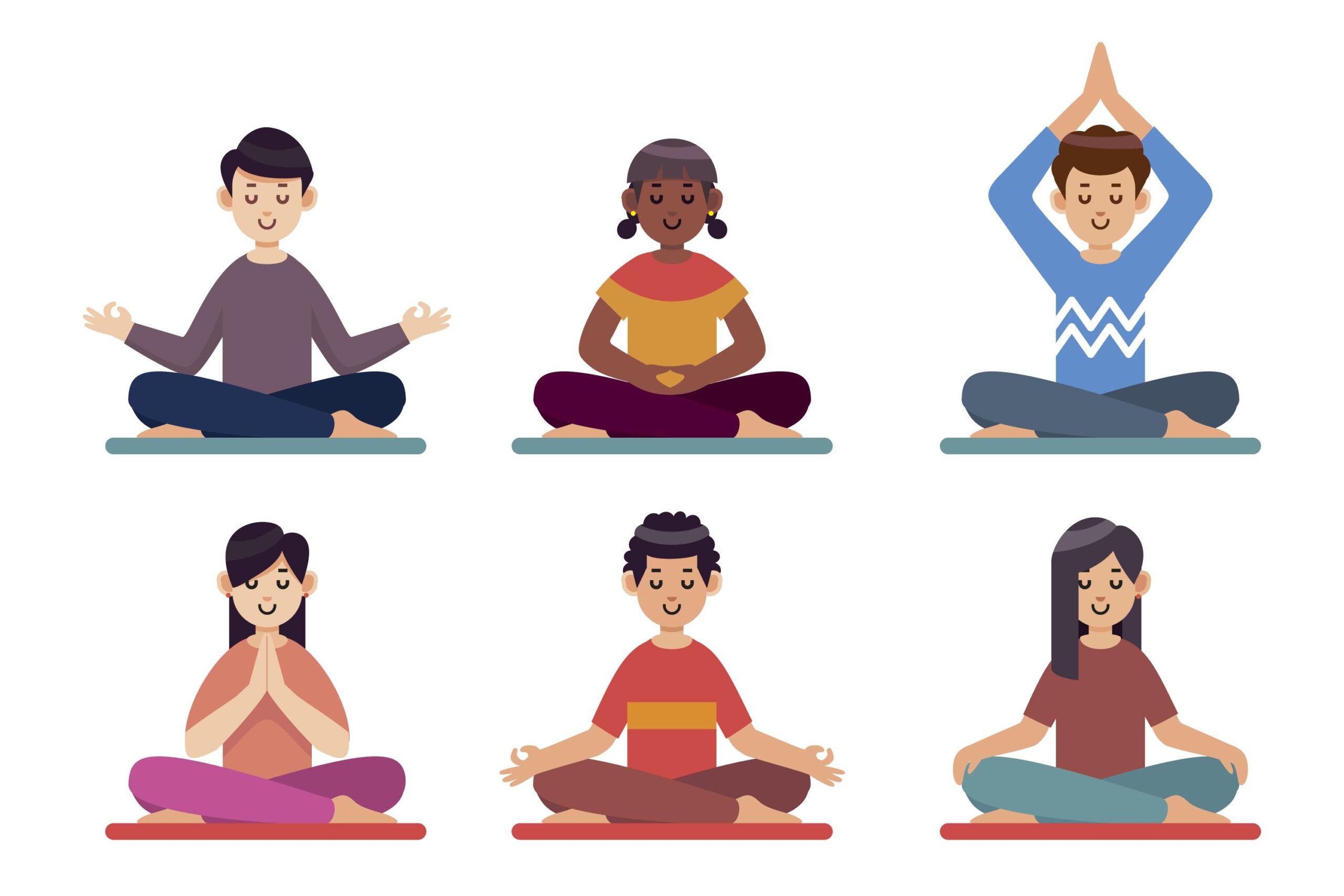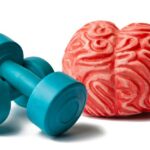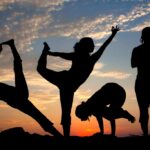
Table of Contents
The energizing breath (Bellows breath)
The stimulating breath, also known as the bellows breath, is an excellent approach to increasing your vitality. In yoga, this form of breathing technique is frequently used to assist enhance Prana, or life force energy.
The invigorating breath might help you gain energy and become more alert. The bellows breath is a safe technique, but it may cause dizziness at first as your body adjusts to the additional energy.
Exercise in relaxing breathing (4-7-8)
The 4-7-8 breathing practice is also a simple technique. It entails breathing in while counting to four, holding the breath for seven counts, then exhaling for eight counts.
This approach is a natural nervous system relaxant.
Counting my breaths
Another beneficial practice is counting your breaths.
- Sit with your back straight and in a comfortable position. close your eyes and naturally take a few deep breaths in and out.
- As you inhale, mentally count to one and exhale slowly.
- Inhale again, count to two, and exhale gently.
- Repeat this cycle as long as you like, counting as you go.
- Aim for a ten-minute breathing session.
Meditation on Body Scan
Body scan meditation, also known as body awareness, is a practice that helps you to tune out distractions while focusing on different parts of your body.
Body scanning is an excellent practice for becoming more aware of how you are feeling at any particular time.
Breathing through the diaphragm
Another effective method for reducing stress and anxiety is diaphragmatic breathing, sometimes known as belly breathing. Breathing in this manner causes the body to relax, allowing the respiratory system to work properly.
Shallow breathing is frequently associated with sensations of anxiety, panic, or tension. Abdominal breathing practice allows the mind and body to calm down and relax.
Progressive Muscle relaxation
Progressive muscle relaxation is a simple exercise in which you tense and releases all of your muscles, working your way up from your feet and toes to your head. As the name implies, the activity is intended to help the body gradually relax. This approach can aid in the reduction of muscle tension, weariness, neck and back pain, and even muscle spasms.
Visualization
Visualization is a wonderful technique to relax and soothe the body, and it can also aid with sleep. You are daydreaming and imagining whenever you utilize your imagination.
Visualization for relaxation and sleep employs the imagination to create a mental location in which the mind and body can be peaceful and comfortable.
The blackboard method
Counting is another effective method for aiding sleep. The blackboard technique entails writing numbers on a chalkboard and then mentally erasing them. You can also visualize the numbers appearing and disappearing behind a black curtain. The act of keeping track of numbers makes you tired since you will become bored doing so.
Meditation while walking
Walking meditation is the simplest kind of meditation. Walking meditation is ideal for those who enjoy being outside or who have difficulty sitting still and clearing their mind.
Strolling meditation entails walking silently and contemplatively. Walking is extremely beneficial to the mind, body, and spirit.
Meditation on gratitude
A Gratitude Meditation is a practice in which you consider all of the blessings in your life. It’s a basic technique that yields tremendous effects. Dr. Kathi Kemper’s meditation at Ohio State University’s Center for Integrative Health and Wellness is a fantastic place to start.
Focusing on what you are grateful for might help you change your focus away from the negative and toward the good.
The Stillness Test
Using a timer and soothing music is an excellent approach to teaching youngsters the fundamentals of meditation and mindfulness.
Students are instructed to sit still and listen to relaxing music while remaining motionless. You may also set a timer for 3-5 minutes and dim the lights.
Ask them to locate a comfortable place to sit and remind them that you will be starting a new stillness challenge together.
Meditation with a breathing partner
Holding a plush animal is part of the breathing buddy meditation. Students begin by selecting a plush animal, such as a teddy bear, before lying down and closing their eyes. Set a timer for 3-5 minutes and instruct the pupils to place the plush animal on their stomachs.
Meditation with sound
Sound focus meditation entails listening to a bell or tone, such as a Tibetan singing bowl.
Students are asked to close their eyes and relax comfortably. Students are instructed to breathe calmly and listen closely while they hear the bell or tone, especially as the sound fades away. This practice is useful for teaching pupils how to focus and concentrate.
One Minute of Mindfulness as an Exercise
The One Minute of Mindfulness practice is a simple and enjoyable mindfulness meditation.
This workout can be done at any time of the day. Set a timer for 60 seconds and spend the entire minute concentrating only on your breathing. Take note of how your breath sounds as you breathe in and out.
Conscious Observation
This is another easy approach for clearing your mind. Choose an object from your surroundings. Any object will suffice. Hold the object in your hands and let your attention be completely consumed by it. Consider how it feels in your hands if you are holding a coffee mug. Don’t overthink it either; instead, let yourself be present at the moment.
Breathing exercise for two minutes
To begin, find a comfortable position. Set a 2-minute timer. Close your eyes to avoid being distracted. Relax and examine any areas that appear tight or stiff. If this is the case, try breathing in and softening those places. Check-in with your body and take note of how it feels.
Meditation on gratitude
It is quite powerful to pause and practice thankfulness. A 2015 study found that mindfulness-based appreciation practices were connected with increased pleasure and decreased stress. Close your eyes and think about something simple that you are noticing right now. This could be something as simple as seeing a tree outdoors or feeling warm. Next, choose someone who has influenced your life. This might be someone you know or someone you don’t know.
Exercises in Transcendental Meditation
Transcendental Meditation (TM) is a meditation practice that is intended to help you raise your awareness and avoid distracting thoughts.
The approach is based on old Vedic traditions.
Exercises in Stoic Meditation
Stoic meditation is founded on the philosophy of Stoicism, which emphasizes restraint, compassion, and humility. The Negative Visualization exercise might help you boost your happiness by focusing on how you would feel if you lost certain aspects of your life. While it may appear negative, this activity can help you develop a new sense of appreciation for what you have.
Visualization is just the formation of mental images. Visualization also entails engaging your imagination in the same way you did as a child. Close your eyes and envision yourself somewhere happy using visualization meditation.
The Beach.
Close your eyes and take some long, calm, deep breaths. Take at least three to four deep breaths. Consider yourself walking on the beach. Try to see, feel, and hear things with all of your senses. Feel the warmth of the sun on your skin and listen to the sound of the waves. Consider how beautiful the ocean is and how white the sand is. You might even pick up some little shells or enjoy the feel of the ocean water as you walk.
The Empty Screen
The blank screen allows you to clear your mind. Assume you’re looking at a white wall or a blank screen. Whenever you get a random thought, see yourself eliminating it from your head. When you allow your mind to wander, you provide no resistance, and your vibration automatically rises. You can then work on whichever goal you want.
The Forest Trail
This is an excellent stress-relieving activity. Consider yourself going along a wooded trail. As you walk, hear the crackling of sticks and twigs beneath your feet and smell the mustiness of the atmosphere. Take note of how good you feel while you walk. Feel the sun on your skin and inhale the aromas of flowers and vegetation. You could do it.
Single-tasking
You probably assumed (right!) that single-tasking is the inverse of multitasking. All that is required is that you commit to whatever task you are working on.
When working on the computer, concentrate on one activity at a time. Close any browser tabs that aren’t related to the project you’re working on, even if you don’t want to. This can help to clear mental space and may even result in laser focus.
Game of wiggle and freeze
This game is a fun approach for kids to practice mindfulness and increase their awareness of physiological sensations through movement. It entails moving around, shaking, stomping, or dancing until you say, “Freeze!” Encourage youngsters to pay great attention to their sensations once everyone has stopped moving.
Dragon inhaling
Dragon breathing is a fun approach to teaching children to breathe slowly and deeply. The easy version requires no supplies, but you may combine a fun project to truly hammer home the lesson. To maximize the pleasure, read or make up a short story about dragons to pique everyone’s interest. “The Mindful Dragon,” “There’s a Dragon in Your Book,” and “Train Your Angry Dragon” are all wonderful choices.
Cards for relaxation
In tough situations, small reminders can help children practice mindfulness. This is another simple craft that gives youngsters a tool to use in their daily lives. Make the kids reflect on things that help them feel peaceful, such as sipping water, taking deep breaths, and closing their eyes.
Appreciation for music
For teenagers, music can be an excellent entry point into the world of mindfulness.
Teens only need their preferred music and a place where they won’t be interrupted to practice. The music should ideally be something they haven’t heard too many times before. Headphones also work.
Shaking
Shaking is another enjoyable approach to combine exercise and mindfulness that does not require music. This is also referred to as a tension and trauma release exercise, or TRE.
Scan of the body
Body scan meditation is a simple and peaceful technique for calming the mind and body. It entails scanning your body carefully for sensations such as discomfort or stress. Simply lie down, relax your body, and tune in to your feelings to practice.
Tracking
Tracking is a somatic experience approach that can help you feel more grounded and present in your surroundings. This is accomplished by glancing about the room and mindfully studying objects.






